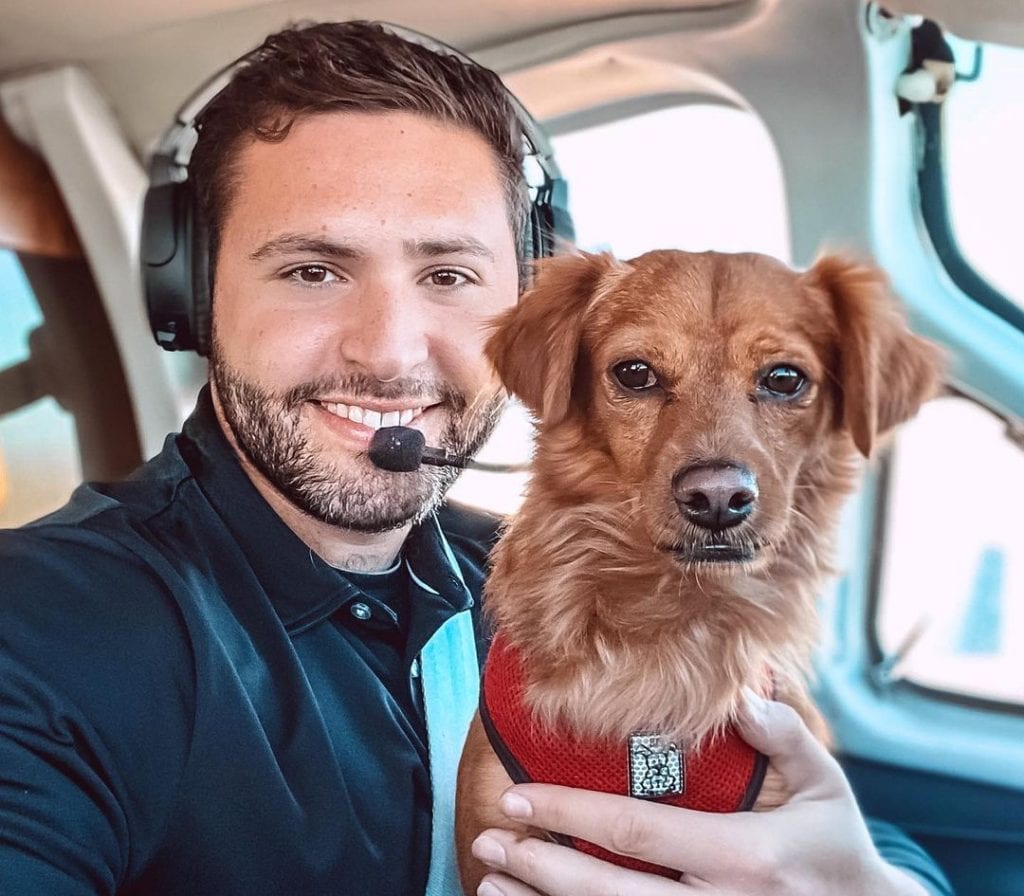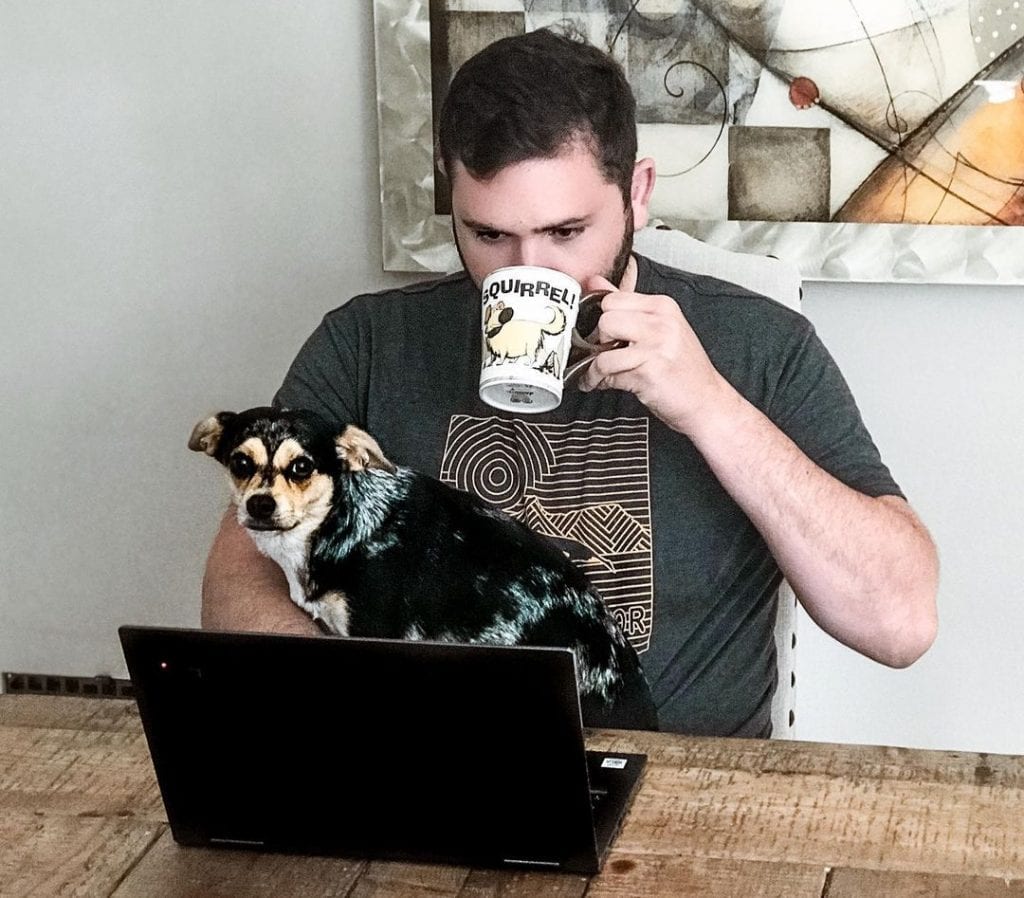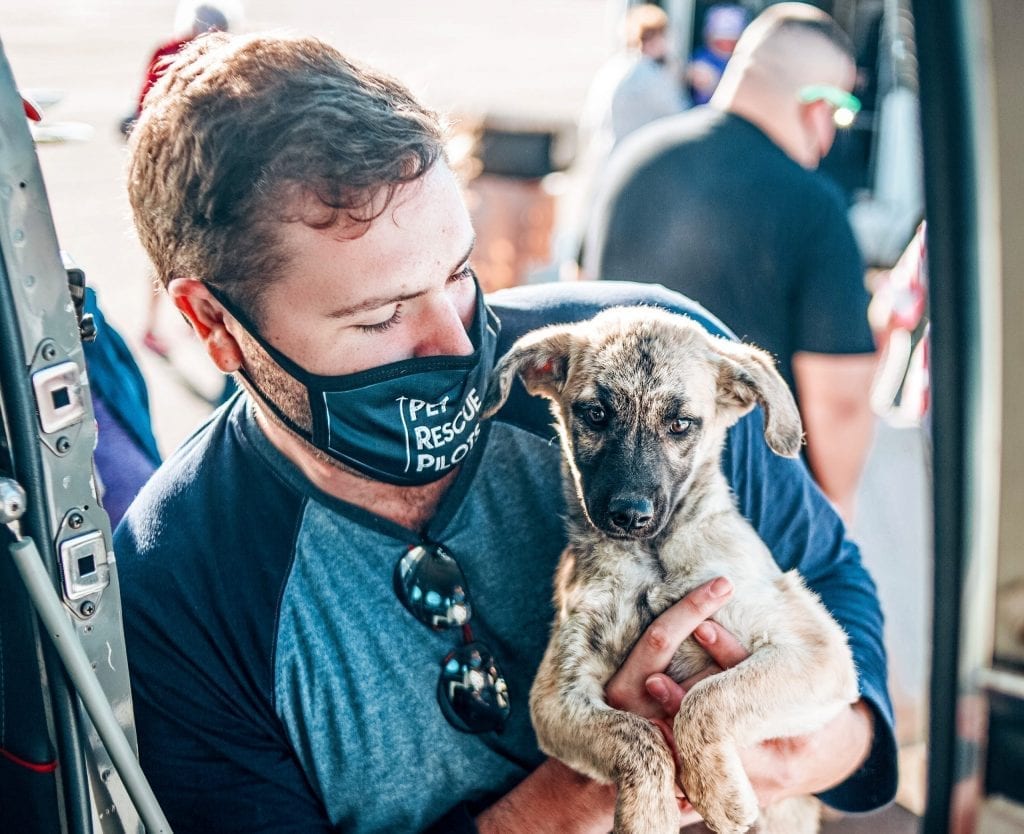From an outsider’s perspective, the life of flying through the clouds with a puppy in your lap may seem like heaven – that’s because it is. Nevertheless, the amount of work that goes into each Pet Rescue Pilots freedom flight is monumental, from takeoff to landing the aircraft back at home base to be disinfected for the next flight.

In the words of David McKay: “Good things require effort. That which is worth having will cost part of your physical being, your intellectual power, and your…soul.” Over the past three years of doing pet transport flights and especially the 12 months since founding Pet Rescue Pilots, I have put forth greater effort than I even knew I was capable of. Today, I’d like to share a glimpse of what all goes into making these flights possible.
Preparing for takeoff
The month begins with a joint call with our two coordinating rescue partners, RSQ209 in Central California and Barkhouse Org in New Mexico. Together, we set a framework for the trips which includes determining terminus destinations, aligning receiving rescue organizations that have the bandwidth to take pets up in the Pacific Northwest and coordinating sending organizations down south.

For Pet Rescue Pilots, RSQ209, and Barkhouse, our mission is the improve the life of shelter pets focusing on those that are endangered due to overcrowding in their shelters and that face possible euthanasia. We insist on sending these most at-risk pets to receivers who will place them in loving foster or adoptive homes within roughly 10 days of arriving to their destination.
This is what we all call ‘rescue by relocation’. These pets are no less deserving of a loving home than the ones that happen to get adopted down south, but by moving them to areas less crowded, we are giving them a chance to shine. We aim to relocate about 150 pets each month across 3-6 flights.
With the aid of my coordinating rescue partners, we can fill the aircraft by taking on pets from all of the sending organizations that we work with in California (while New Mexico typically fills the aircraft from the shelter directly). This takes endless calls back and forth about what dogs have been requested for transport, what we have room for, crate orientation in the aircraft, potential delays, etc.
All hands on deck
This is where I give a nod to my incredibly hardworking rescue partners, without whom none of this would be possible. These organizations work tirelessly to ensure that the vetting, health certificates, vaccinations and foster care are all in order leading up to flight day – it is a highly choreographed part of the mission that is well above my pay grade.
Once all this coordination is completed, it’s time for Pet Rescue Pilots to get to work – namely in bridging the geographic boundaries between the sending and receiving rescues who have put immense work into the flight’s manifest.
We start by weather forecasting five days prior to each scheduled flight. Using various apps and websites (generally referred to as DUATS in aviation) available to me, I examine at prognostic charts, precipitation and convective outlooks, and any sort of significant weather patterns that may result in hazardous weather before flight day.
With all the groundwork that goes on behind the scenes, a late notice weather cancellation has extensive ripple effects on so many people and pets. On a typical Friday before Saturday’s rescue flight, I have a group text with 10 or more people where I have given them the most up to date times of departure and arrival calculated using ForeFlight’s web app on my shiny new Lenovo laptop. By this time, we have decided if the mission is a go.
It’s go time
Saturday morning, we meet our first senders at Hawthorne airport around 7:00am at which time I have already constructed crates and conducted a preflight inspection on the aircraft. Wheels up by 7:30am leaves us with stops in Fresno/Calaveras County, CA to pick up an additional 20-30 pets and onward we continue to Eugene, Portland, Seattle, Bellingham & Vancouver to drop off our “paw”ssengers to their rescue groups, fosters, or adoptive families.

With the incredible help of technology, we typically will arrive to our final destination within +/- 10 minutes of my projected arrival time. By this time, it is usually 6:00pm, we have flown 6 legs over a 12 hour day. We have crossed 3 state borders and 1 international border. We are 1,400 miles from home. We have 30 crates to disassemble and disinfect. We have eaten all our protein bars (because there’s no time for a proper meal with pets onboard) and are ready for an all-you-can-eat buffet, and finally, and surely most importantly, we have delivered 30 or more pets from a life of uncertainty and loneliness into the arms of love and care.
Follow our rescue missions live on Instagram (@petrescuepilots & @pilotjulianj) or on Facebook (/petrescuepilots) to be part of my #LenovoInnovators journey and support Pet Rescue Pilots’ mission to ensure all pets receive a loving forever home.
